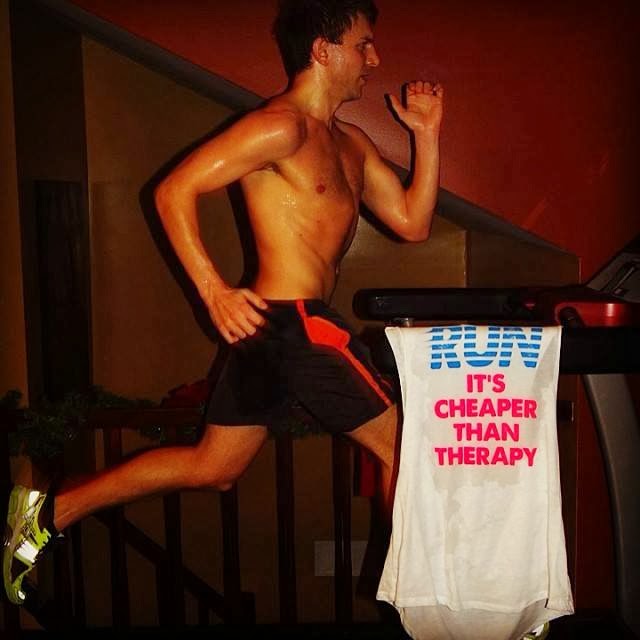By Ed Shephard
If you want to begin running and keep running, then you need to get off to a good start. If you get off to a good start, it’s more likely that your experience will be enjoyable and injury free, rather than frustrating and injury filled. If you have a good first month, you’ll find that you are motivated to continue running. Three keys to starting and sustaining a running program are: being patient, getting adequate rest & recovery, and practicing moderation.
Patience is one of the most important attributes any runner, novice or veteran, can possess. You need to remember that you didn’t get out of shape in one day and you won’t get back in shape in one day. Even after you have been running for a while, you’ll need to remind yourself that improvement will come from maintaining a consistent level of running. Getting caught in cycles of overtraining, injury, and time off is no way to either improve or enjoy running.
To maintain a consistent level of running that will keep you injury free and and experiencing steady improvement, you’ll need to allow your body to get adequate rest and recovery between runs. Improvement comes from repeated cycles of training and recovery, not just the training. Think of training as pushing down on a diving board and rest & recovery letting the board spring up. Too much training, without rest, is like continually push the diving board down without ever letting it spring back up. Eventually, the board breaks(you get hurt). The biggest mistake runners make is trying to do too much too soon, or making big increases in mileage that their bodies aren’t ready to handle. You need to remember that your body’s cardiovascular system will adapt to training more rapidly than your muscles, ligaments, tendons, and bones.
This difference in how quickly different parts of your body adapt to running can lead to issues with your legs. Your recent increases in training might not be tiring you out and you might not even notice anything with your legs until things like shin splints, tendonitis, or stress fractures suddenly appear. In the long run (no pun intended) you will be healthier and more likely to still be running, if you error on the side of doing too little rather than too much running. This is particularly true when you are beginning to run, or are returning to running after a long break. It is much wiser to do one less mile, go a little slower, or take a day off than risk getting hurt. The cost of losing an extended period of time to injury will be much greater than the benefit from squeezing in some running that you should have skipped.
Every runner is unique and every runner must exercise good judgement in answering three questions about their training: how far, how fast, and how often. The answers to these questions depend upon your current level of fitness and how your body responds to training. The toughest part of starting and maintaining a running program is making it through the first month. By being patient, getting adequate rest & recovery, and training at a moderate, but consistent level will make it much more likely that you’ll have a good experience with running and be on your way to becoming a lifelong runner.
 |
| Ed Shepherd finishing the DC Marathon |
About Ed Shephard:
Ed “Shep” Shephard is an accomplished runner and Cross Country/Track Coach. Shep was inducted into Westminster’s Athletic Hall of Fame for his accomplishments in Cross Country and Track including setting records in the 1500, 5000 and 10,000-meter runs.
Shep has a passion for running, and has coached many runners to successful running careers in high school and beyond. He has coached multiple cross country runners and track athletes, from sprinters to jumpers, to the top 10 at States.
Shep has successfully competed in races of all distances and is a fountain of knowledge in all things running related. He was the first coach Jesse Bender ever ran for, and they continue to run together. He is the person the Benders turn to for running advice.


This is wonderful, thank you! Can Ed recommend any resources that will help someone determine how much they should run and how often If they are just picking up running?
Hi Tanja. You’ve asked a very important question. As a coach, I would probably give a different answer to each person who asks the question. The answer depends on what level of fitness(from other activities) that you are bringing to the start of your running program. For almost everyone beginner that I’ve worked with, I have had them start out by running for two minutes and walking for one. I would have them repeating this cycle for about twenty minutes. The pace should be such that you could carry on a conversation while running without having to gasp for air. I would also suggest running no more than 3 days the first week (with a day off in between running days). If things go ok, I would increase the time to 30 minutes the second week either by doing more 2 minutes running & 1 minute walking or go to 3 minutes running and 1 minute walking. Depending on the runner (and seeing them run), I would adjust this training plan. A very important point that I enforce on my newer runners is that they should take walking breaks before they have to take them. I have usually coached face-to-face, so I really haven’t ever had to recommended “guide to new runner” types of books, but here are three that I “looked at” on Amazon that seem like they would be helpful:
Runner’s World Complete Book of Beginning Running Paperback By Amby Burfoot
The Ultimate Beginners Running Guide: The Key To Running Inspired By Ryan Robert
Run: A Complete Beginners Guide (Learn How To Start Running) By Michael Thomas
If you want to get started, based on this reply, I would be happy to guide you if can let me know how your initial runs go(or have gone) for you.
Shep
What if you have not worked out in a long time? What if you are on the older side (say, 48) and want to get back into running. Would you suggest the same starting program? It interested me that you do not advocate the “push through your pain” but rather let your body tell you what is working and not working.
Even if you haven’t worked out in a long time or are on the older side, I would suggest following the same basic approach. You might find that you only run for one minute, then walk for a minute or even run one minute and walk two minutes. If you find that even one minute is too long, try slowing down or consider running for just thirty seconds then taking a walking break.
For my experienced runners, who are trying to be competitive, there are workouts where I want them to push through the fatigue(but not pain). However, if you’re just getting started, you need to give your body time to get acclimated to avoid injury and to have an experience that you will want develop into a life-long habit.
I have recently started running again and have some soreness in my knee. I want to allow it to heal, but I also want to get back out there and start running again. How long should I wait until I run again?
Is there swelling? Did the soreness go away while you were running? Is it sore/tender under/around your kneecap? How does going for a walk affect it? How far and how often were you running?